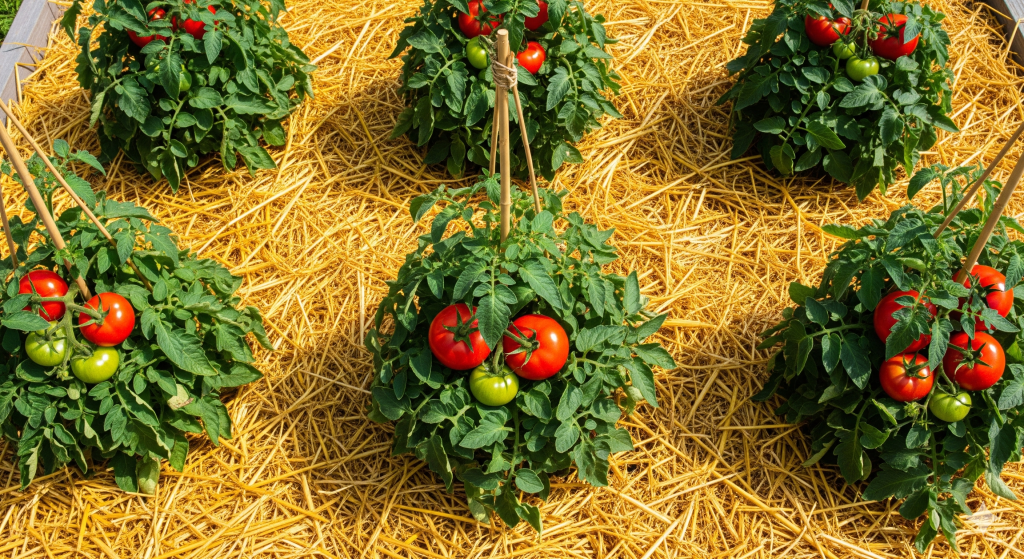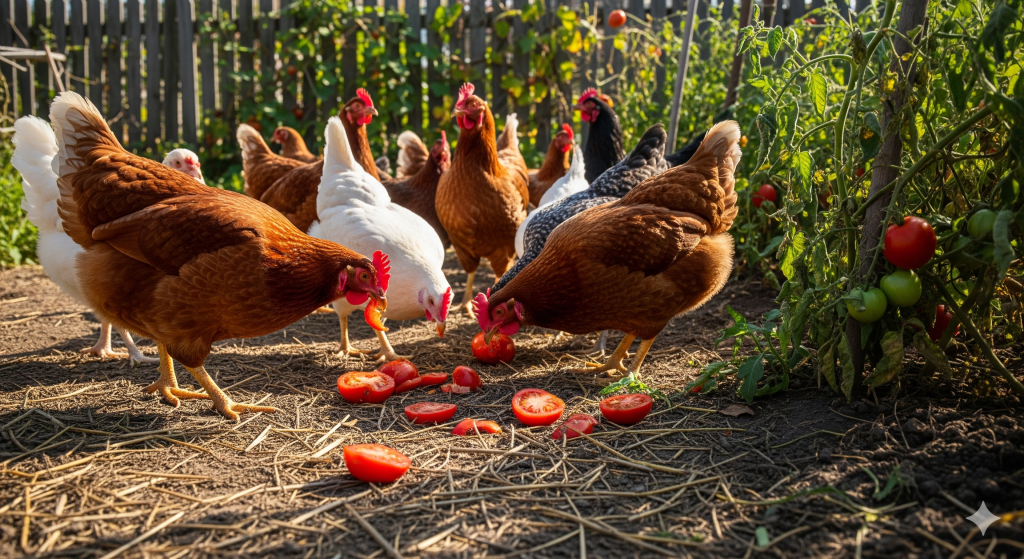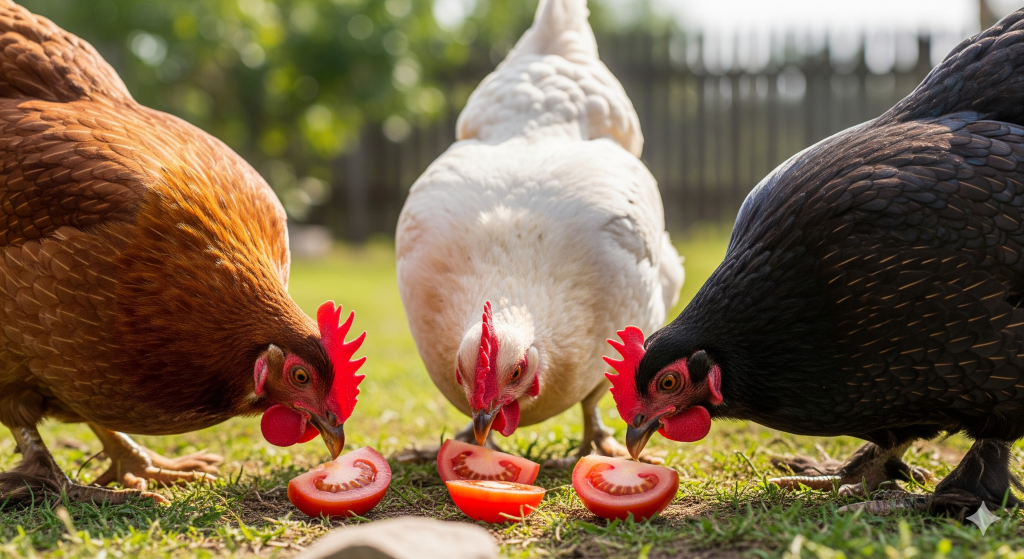Table of Contents
For any gardener dedicated to growing a bountiful crop of juicy, delicious tomatoes, success often lies in the details of cultivation. Beyond just sunlight and water, the health of the soil is paramount. This is where the practice of mulching becomes one of a gardener’s most powerful tools. A common question that arises is, “Can you put straw around tomato plants?” The answer is an unequivocal yes! In fact, straw is one of the most highly recommended and beneficial organic mulches you can use for your tomato plants.
But what exactly is straw mulch, and how does it differ from hay? Understanding this is the first step. Straw is the dry, hollow stalks of cereal grains like wheat, oats, or barley left over after the grain has been harvested. It is primarily carbon-based, low in nutrients, and, crucially, contains very few seeds. This is often confused with hay, which is dried grass or legumes (like alfalfa) that are cut while still green and used as animal fodder. Hay is rich in nutrients but also packed with seeds that will sprout into a lawn of weeds in your garden bed. When we talk about mulching, we are almost always referring to straw.
Using straw as a protective layer around your tomato plants is a time-tested technique that conserves moisture, suppresses weeds, and prevents disease, creating the perfect environment for a thriving and productive harvest. This guide will explore the immense benefits of straw mulch, its few potential drawbacks, and how it compares to other popular mulching options.
Can You Put Straw Around Tomato Plants in Pots?
Yes, you can and absolutely should use straw mulch for tomato plants grown in pots. Container gardening presents a unique set of challenges, and mulching with straw is an incredibly effective way to mitigate many of them.
Pots, especially traditional terracotta ones, dry out much faster than in-ground garden beds due to their smaller soil volume and exposure to air on all sides. A 2- to 3-inch layer of straw on the surface of the potting soil acts as a protective blanket. It dramatically reduces water evaporation from the sun and wind, meaning you’ll need to water less frequently and the soil moisture will remain more consistent. This consistent moisture is vital for preventing common container-related tomato problems like blossom-end rot and fruit cracking. Furthermore, it helps suppress any opportunistic weed seeds that might find their way into your pots.
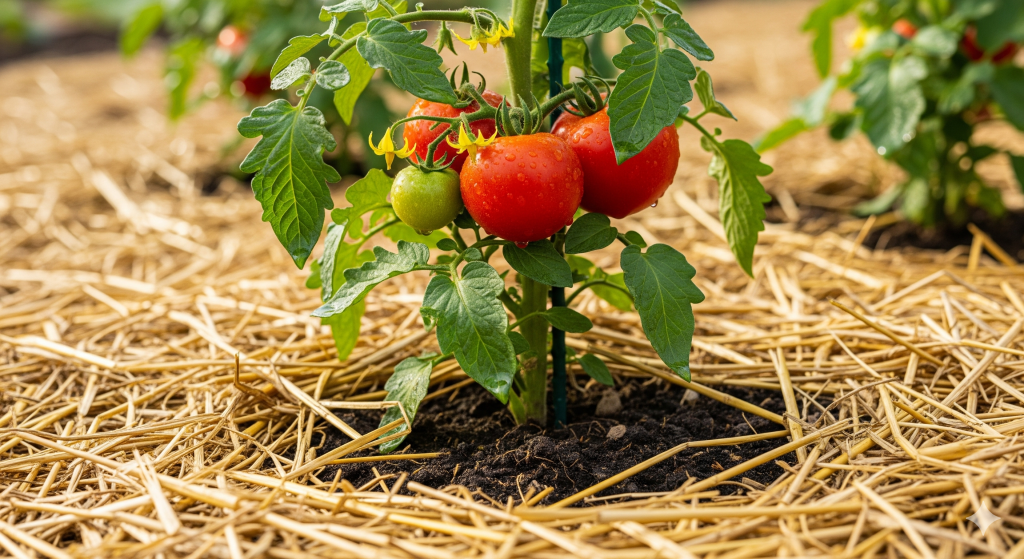
Benefits of Using Straw Mulch for Tomatoes
Applying a generous layer of straw around your tomato plants offers a wealth of benefits that contribute directly to the health and vigor of your plants.
- Superior Moisture Retention: Straw’s ability to insulate the soil is its number one benefit. It shields the soil from the hot summer sun, keeping it cooler and significantly reducing the rate of evaporation. This means more water stays in the root zone where your thirsty tomato plants need it most.
- Excellent Weed Suppression: A thick layer of straw (3-6 inches) effectively blocks sunlight from reaching the soil surface. This prevents most weed seeds from germinating, drastically reducing your weeding chores and eliminating the competition for water and nutrients.
- Disease Prevention: This is a crucial benefit for tomatoes. Many common tomato diseases, like Early Blight and Septoria Leaf Spot, are caused by fungal pathogens that live in the soil. During rain or overhead watering, soil can splash up onto the lower leaves of the plant, transmitting these diseases. Straw creates a clean barrier between the soil and the plant, virtually eliminating this method of transmission.
- Soil Temperature Regulation: Just as it keeps soil cool in the summer, straw can also insulate the soil during cooler spring and fall nights, protecting the sensitive root systems from stressful temperature fluctuations.
- Improves Soil Health (Long-Term): As an organic material, straw will slowly decompose over the season. This process adds valuable organic matter back into the soil, improving its structure, aeration, and ability to hold water over time.
- Keeps Fruit Clean: For indeterminate varieties or those that are not perfectly staked, straw mulch provides a clean, dry surface for low-hanging fruit to rest on, preventing rot and reducing slug damage.
Best Mulch for Tomatoes in Pots
While straw is an excellent choice, the best mulch for potted tomatoes is often a matter of availability and specific needs. Good options include:
- Shredded Leaves: A fantastic and free resource. They decompose nicely, adding nutrients to the soil.
- Pine Straw (Pine Needles): Lightweight and doesn’t compact easily, allowing for good air and water flow.
- Compost: A thin layer of compost can act as a mulch while also providing a slow-release source of nutrients.
Ready to Take Your Self-Sufficiency to the Next Level?
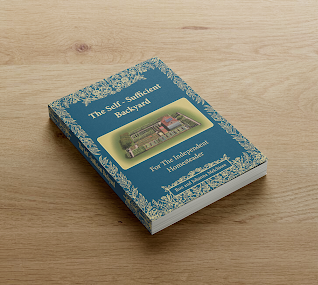
If you love the self-sufficient lifestyle, this is the only guide you’ll ever need. Learn how to generate your own power, secure your water supply, and become truly independent. No fluff, just actionable plans.
➡️ Check out The Self-Sufficient Backyard and start your journey today!
What Are the Disadvantages of Straw Mulch?
While the benefits are numerous, there are a few potential drawbacks to consider when using straw mulch.
- Potential for Weed Seeds: Ensure you are buying clean, high-quality straw, not hay. Even the best straw may contain a few stray grain seeds, which might sprout. These are usually easy to identify and pull.
- Can Harbor Slugs and Snails: The moist, protected environment under the straw can be an attractive hiding place for slugs and snails. While the straw itself doesn’t cause them, you may need to be more vigilant about pest control if you have a known slug problem.
- Can Tie Up Nitrogen (Initially): As the carbon-rich straw begins to decompose, the soil microbes responsible for the process use nitrogen from the soil. This can cause a temporary nitrogen deficiency right at the soil surface. This is easily prevented by applying a nitrogen-rich fertilizer before you lay down the mulch.
Best Mulch for Tomato Plants
While straw is a top contender, the “best” mulch can vary by region and a gardener’s goals.
- Organic Mulches (Best All-Around):
- Straw/Shredded Leaves: Best for overall soil health, moisture retention, and disease prevention.
- Grass Clippings: A good, nitrogen-rich option, but apply in thin layers to prevent matting and ensure they come from an untreated lawn.
- Compost: Excellent for feeding the soil, though not as effective at weed suppression unless applied thickly.
- Plastic Mulches:
- Red Plastic Mulch: Scientific studies have shown that the specific red light reflected from this mulch can increase tomato plant growth and yield.
- Black Plastic Mulch: Best for warming the soil in cooler climates to get an earlier start.
Can You Put Black Mulch Around Tomato Plants?
Yes, you can use black mulch around tomato plants, but it’s important to distinguish between the two common types.
- Black Plastic Mulch: As mentioned, this is a synthetic option used to warm the soil, suppress weeds, and conserve water. It is very effective but does not improve the soil’s organic content and can overheat roots in very hot climates.
- Black-Dyed Wood Mulch: This is an organic, though colored, mulch made from shredded wood. It offers the same benefits as other wood mulches, such as moisture retention and weed control. However, like all wood mulches, it can temporarily tie up nitrogen as it decomposes. There are some concerns about the safety of the dyes used, so it’s best to source it from a reputable supplier who uses non-toxic, vegetable-based dyes. For a vegetable garden, natural, undyed mulches like straw or compost are generally considered a safer and more beneficial choice.
Conclusion
For gardeners seeking to grow healthier, more productive tomato plants with less effort, mulching is not just an option—it’s a necessity. Among the many choices available, straw stands out as a superior, all-natural option that delivers a powerful combination of benefits. By creating a protective barrier, straw mulch conserves precious moisture, smothers weeds, and significantly reduces the threat of soil-borne diseases. It is a simple, cost-effective, and organic tool that works in harmony with nature to improve your soil and support your plants. While other mulches have their place, the proven, time-tested effectiveness of straw makes it an invaluable ally in your quest for the perfect homegrown tomato.

